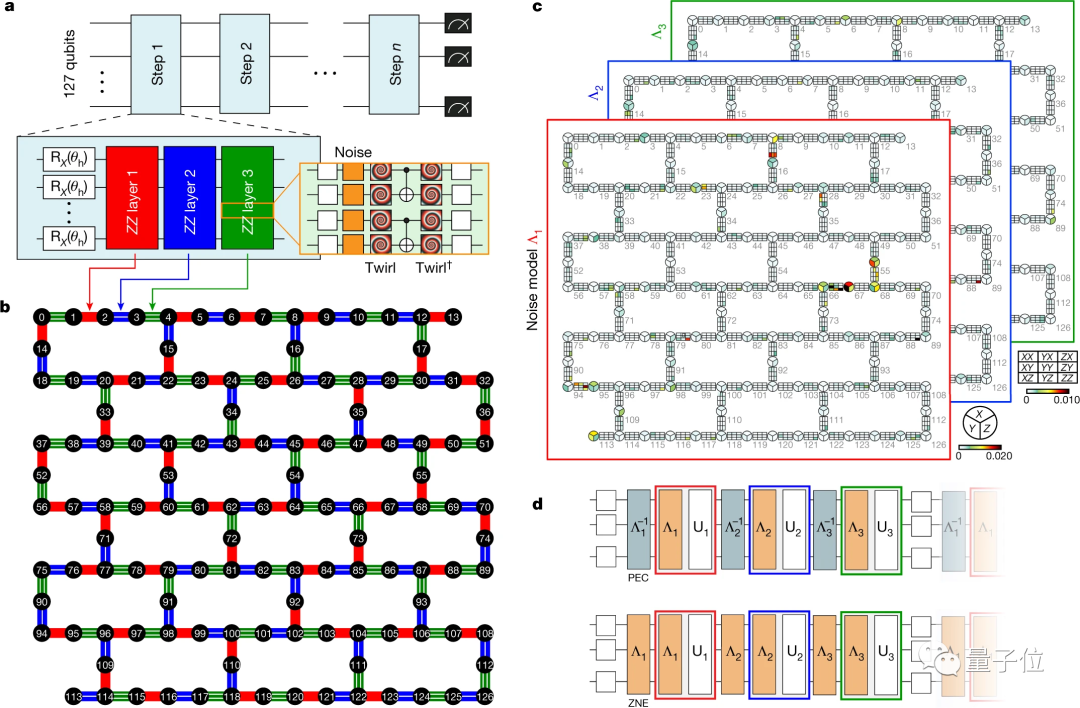
IBM announced that quantum computers will be put into practical use within two years at the earliest!
The IBM team has successfully simulated the behavior of a magnetic material on its Eagle quantum processor.
This indicates that the biggest obstacle to the practical application of quantum computing has been resolved.

△Quantum computer equipped with "Eagle" chip
This obstacle is called "quantum noise" and will cause calculation results to appear. mistake.
The research team measured the noise of each qubit in the processor one by one and speculated on the state of the system under zero noise.
Based on observations and speculations, the team developed a new "error mitigation" technology.
Using this technology, the team successfully performed a complex operation on the 127-qubit Eagle processor.
Sarah Sheldon, senior director of IBM's quantum research and development department, said that we can begin to imagine using quantum computers to solve some previously unsolvable problems.
The relevant paper has been published in the latest issue of Nature and appeared on the cover.

This research result was also introduced in the latest issue of Nature Podcast.
During the program, the host commented that IBM's move was "very brave" but also "has conclusive evidence" when quantum computing was not optimistic.

Later this year, IBM will also release the 1121-qubit Condor chip.
Due to the existence of quantum entanglement effect, quanta not only exist in two ways: 0 and 1, but also their superposition states.
This makes the efficiency of quantum operations theoretically significantly higher than that of traditional computers with only two states: 0 and 1.
But in fact, quantum computers have not been put into practical applications.
The reason is a bit speechless - although quantum operations are fast, the error rate is also very high.
The culprit behind the error is quantum noise.
According to the Heisenberg Uncertainty Principle, the environment is full of fluctuating energy all the time, and it cannot be eliminated even if the temperature is as low as absolute zero.
The never-ending fluctuations of quantum particles cause them to crowd and collide with each other. This is the source of quantum noise.
For a single quantum, the error caused by noise may not be high (less than 1%).
But a quantum computer is a complex system composed of a large number of quanta, and the errors generated by each quantum become non-negligible after superposition.
In addition to solving the problem of quantum noise, IBM believes that it is also necessary to ensure that the quantum processor has a certain scale and computing speed.
The process of eliminating quantum noise is called quantum error correction. The method is to use more qubits to describe a qubit so that errors can be corrected.
But the flaw of this idea is obvious-we simply cannot control so many qubits.
Therefore, for quantum noise, the commonly used method now is to offset its influence rather than directly eliminate it.
The traditional cancellation method is to monitor error information in real time and establish a cancellation algorithm. However, as the number of qubits increases, performance bottlenecks also appear.
The IBM team developed a new offset method to bypass this bottleneck.
The core of this method are two key technologies: pulse stretching (Pulse Stretching) and zero-noise extrapolation (Zero Noise Extrapolation).
Pulse stretching is to amplify quantum errors by extending the operation time of each qubit, which is more conducive to observation.
In this process, IBM adopted the Ising model (Ising model) commonly used in physics.
The most basic assumption is that interactions only exist between nearest neighbor spins.
Specifically for this project, the arrangement of qubits is the basis for setting the arrangement of the model lattice.
Despite the same arrangement, the Ising model exists independently of the processor hardware.

Zero-noise extrapolation is to establish a function based on the collected error information after amplification at different ratios (the amount of collection is much lower than the traditional method) Model.
The zero point value is extrapolated based on the function model, which is the operation result when there is no error.

Although there are still certain limitations, the quantum processor that offsets some errors in this way can already perform some operations.
The IBM team sent its results to the University of California, Berkeley, for performance evaluation and comparison with their supercomputers.
The results show that the calculation results of the Eagle chip-driven quantum computer are much closer to the real values than those of traditional computers.

# However, IBM researchers pointed out that using this offset method to eliminate the impact of noise is only a short-term strategy.
IBM is also gradually expanding the number of qubits contained in its processors.
According to researchers, processors with more than 100,000 qubits will be manufactured by 2033, by which time quantum errors will be fundamentally resolved.
Paper address: https://www.nature.com/articles/s41586-023-06096-3
The above is the detailed content of Nature cover: Quantum computers are still two years away from practical applications. For more information, please follow other related articles on the PHP Chinese website!




